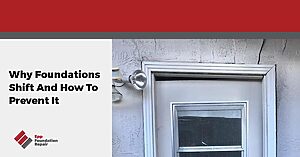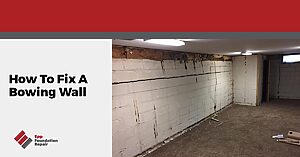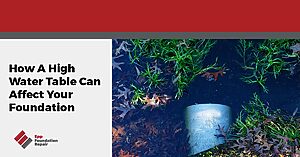If you’re googling “how to support floor joists in a crawl space,” you’ve landed on the right page. In this article, you’re going to learn the signs and causes of sagging floor joists as well as how to support floor joists in a crawl space.
Crawl space foundations are great but…
Crawl space foundations have been popular for a long time. Homeowners like them because they offer easy access to the home’s plumbing and electrical wiring. In contrast, slab foundations need to be jackhammered to get at the utilities. However, crawl space foundations aren’t without their problems. The floors in older crawl space homes often start to sag and become unlevel. Depending on where you live and the soil conditions, this might be caused by wood rot, settlement, water, or simply because there aren’t enough support posts or floor joists to hold up the floor. Construction mistakes do happen.
Signs your floor joists are sagging
If the floor joists in your home’s crawl space are having problems, you might notice,
- A sagging floor
- A sloped, uneven floor
- A floor that feels spongy when you walk on it
- Furniture that shakes when you walk by
- Wall cracks
- Doors and/or windows that don’t open and close properly
Why you might need to support floor joists in a crawl space
Sagging floor joists are caused by various things including,
- Not enough support posts, beams, or joists – Sometimes, a home’s foundation simply wasn’t built with adequate support and because of this, isn’t able to hold up a house. This can happen when there aren’t enough support posts (or they’re too small), beams, and/or joists in the crawl space.
- The wood used in the girder and joists has weakened – Wood is susceptible to moisture-caused rot and damage from termites or other wood-eating pests. Over time this damage will weaken the beams and joists.
- Weak soil – There are different types of soil. Some soils are strong and can support a heavy structure, while others are weak and not suitable for construction. A crawl space foundation built atop weak soil will eventually develop problems. The support posts will sink, and even the strongest floor joists and beams will fail to support the home.
- Water – Water is the cause of most foundation problems because it softens the soil and leads to differential settlement (see below graphic). Therefore, keeping groundwater under control is essential if you want to avoid foundation problems. The Epp Foundation Repair crawl space encapsulation system is designed to isolate your living space from the humid crawl space environment. For more information see our post about the causes and solution for water in crawl space.

How to support floor joists in a crawl space
Methods used to support floor joists in a crawl space include,
- Installing sister joists alongside the existing joists – A sister joist is a new joist installed alongside the damaged joist. Sistering allows the new, healthy ‘’sister’’ joists to take some load off the damaged joist.
- Installing additional beams – You can also strengthen floor joists from beneath by installing additional beams. More beams mean less pressure on the joists.
- Bridging – Because joists that twist or lean sideways aren’t as strong, it’s essential to keep them straight. Bridging involves installing metal or wood strips between the joists in an x pattern. This prevents the joists from moving sideways.
- Blocking – Blocking also keeps the joists straight. However, instead of using strips in an x pattern to prevent lateral movement, blocking uses wood pieces the same width as the space between the joists.
- Concrete or brick columns – Another way to strengthen floor joists from beneath is to use concrete (or brick) columns. Concrete or brick columns installed under the beams can also add support to floor joists in a crawl space. If future settlement is a concern, an adjustable bracket could be attached to the top of each column. No need to use shims.
- Jack posts – The house leveling jacks we use at Epp Foundation Repair are capable of supporting up to 24,000 pounds if the footings are strong enough and big enough. These house leveling jacks are also adjustable, so if settlement does occur, they can be fine tuned. (Even if the jacks couldn’t support this much weight, more posts could be added to make up for it.)
For more information, read more about – Sagging floor repair cost.

Because you might be wondering…
What’s the different between a beam and a girder?
Here in the Midwest, we call them “beams”. However, if you’re in California, you might hear them called “girders’’. It’s the same thing. Beams – or if you prefer, girders – support and run perpendicular to the floor joists. Beams/girders range in size from 4”x6” to 6”x8”.
So, what’s a joist?
Your floor sits on top of the joists, which are supported by the beams/girders. Floor joists are smaller than beams and can be anywhere from 2”x6” to 2”x12”.
Hopefully, this short article has been able to answer your query, “how to support floor joists in a crawl space”. If you live in a home with a crawl space, an uneven, sagging, or spongy floor usually doesn’t mean there’s a problem with your home’s foundation. Most of the time it’s just an issue with your crawl space.
If you have a sagging crawl space and you’re in our service area in Nebraska, Iowa, Kansas, and Missouri, contact us today for a repair estimate.







